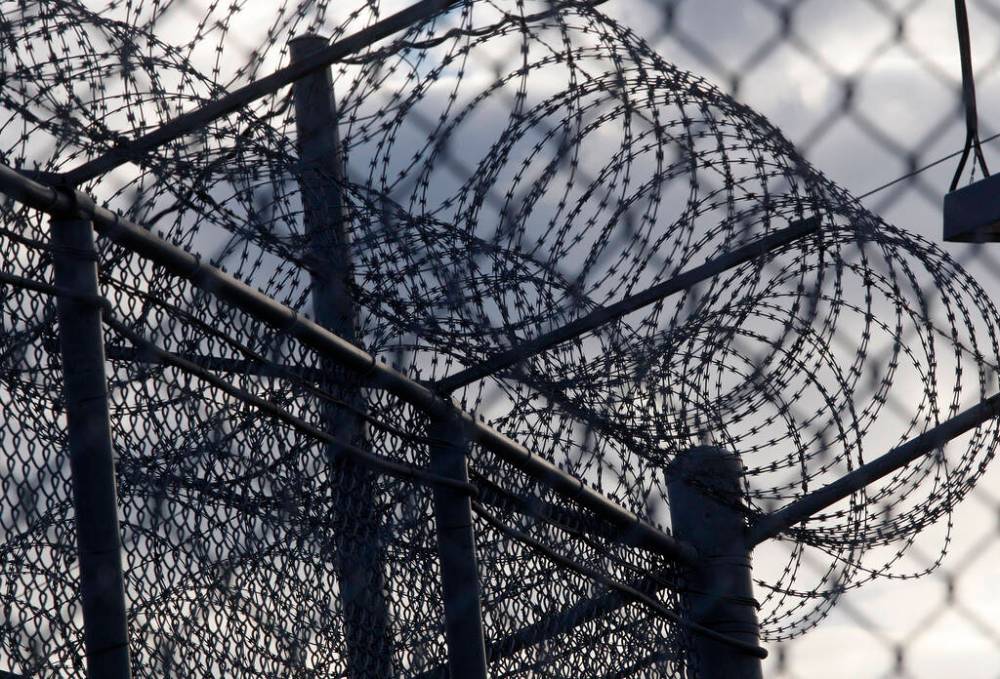Mandatory sentencing reform one step toward level field
Read this article for free:
or
Already have an account? Log in here »
To continue reading, please subscribe:
Monthly Digital Subscription
$0 for the first 4 weeks*
- Enjoy unlimited reading on winnipegfreepress.com
- Read the E-Edition, our digital replica newspaper
- Access News Break, our award-winning app
- Play interactive puzzles
*No charge for 4 weeks then price increases to the regular rate of $19.00 plus GST every four weeks. Offer available to new and qualified returning subscribers only. Cancel any time.
Monthly Digital Subscription
$4.75/week*
- Enjoy unlimited reading on winnipegfreepress.com
- Read the E-Edition, our digital replica newspaper
- Access News Break, our award-winning app
- Play interactive puzzles
*Billed as $19 plus GST every four weeks. Cancel any time.
To continue reading, please subscribe:
Add Free Press access to your Brandon Sun subscription for only an additional
$1 for the first 4 weeks*
*Your next subscription payment will increase by $1.00 and you will be charged $16.99 plus GST for four weeks. After four weeks, your payment will increase to $23.99 plus GST every four weeks.
Read unlimited articles for free today:
or
Already have an account? Log in here »
Hey there, time traveller!
This article was published 24/05/2022 (1297 days ago), so information in it may no longer be current.
Almost a quarter-century ago, in 1998, the Solicitor General of Canada issued a report stating 12 per cent of the federal prison population was made up of Indigenous people.
At the time, it was called a “crisis,” because Indigenous people composed three per cent of Canada’s population.
In December, the Office of the Correctional Investigator reported that number had risen to 32 per cent, more than six times the percentage of Canada’s Indigenous population.

The situation is much worse for Indigenous women. As of May, every second prisoner in a federal prison — 50% of all female inmates — is Indigenous.
The reasons for this recent and radical increase are quite straightforward, according to a new report led by independent Sen. Kim Pate.
Some are well-known, such as the legacies of residential schools, historical mistreatment of Indigenous women, and prosecutorial and judicial bias. Some are obvious, such as the fact Indigenous communities are over-policed, under-resourced and living under a draconian and brutal Indian Act that inhibits opportunity and ensures poverty is generational.
I say “well-known” and “obvious” because the Aboriginal Justice Inquiry final report was released in 1991, not to mention dozens of similar reports since. No one should have to be convinced racism exists in Canada’s justice system, and one of the most blatant evidence is found the rates of Indigenous people in jail.
Pate’s report, however, underlines a sobering fact: policies of mandatory sentencing, imposed nearly 20 years ago under Stephen Harper’s Conservative federal government, are the primary reason for the exponential increase.
As the report quotes the National Inquiry into Murdered and Missing Indigenous Women and Girls final report: “Mandatory minimum sentences… relates to the sentencing and over-incarceration of Indigenous women, girls and (LGBTTQ+) people.”
Mandatory sentencing means no matter the context, no matter the reasoning, there is a fixed amount of years a “guilty” person will go to jail.
Turns out, federal laws guaranteeing mandatory sentences result in increased Indigenous incarceration, many for non-violent drug possession offences.
From 2007-17, in the years after the sentencing rules took effect, Indigenous imprisonment almost doubled, to 26 per cent from 14 per cent.
Mandatory sentencing is an incredibly powerful tool for a Crown prosecutor during plea negotiations. Equipped with charging a crime with a mandatory sentence, a prosecutor will use a higher charge to encourage a plea to a lesser charge.
Judges, who are supposed to be the objective arbiters of reason, have their hands tied. All that’s left is politics.
The problem is: racism is the No. 1 reason Indigenous people enter the justice system. Whether it is a young gang member, drug addict or person charged with theft, history — and in particular Canada’s policies and practices involving Indigenous communities — plays a role.
As Pate’s report illustrates: “Nearly all individuals in federal prisons were living in poverty at the time they were criminalized. Rates of disabling mental health issues are four to seven times higher in prisons than in the community. Eighty-five per cent of all women — 91 per cent of Indigenous women alone — in federal prisons have histories of physical and or sexual abuse.”
The reality Indigenous people — and in particular Indigenous women — suffer from racist policies and practices that have led to cycles of violence, marginalization and incarceration isn’t an excuse. It’s a fact.
So, if racism plays a role in someone being charged with a crime, why can’t it play a role in justice?
In 1999, the Supreme Court of Canada recognized in the “Gladue decision” the historical reasons leading to an Indigenous person being charged with a crime must be considered during a trial alongside alternatives to sentencing.
This was supposed to mean the unique experiences of Indigenous offenders could be contextualized and a judge could ascertain what would be best suited for a person to heal, rebuild oneself, and re-enter society when ready and completed their sentence.
Harper’s mandatory sentence policy stilted all of that.

As a result, in December, the federal Liberal government introduced Bill C-5, which proposes to repeal 20 mandatory minimum sentences, for mostly drug and gun crimes (note: 53 mandatory minimums for crimes such as murder and violent assault remain).
This legislation, if passed, would put back in the hands of judges the ability to consider why an offender is in front of them and what is best to do for them and society.
In other words, the original vision of the Supreme Court’s Gladue decision in 1999.
Ending a crisis made worse over the past two decades is a good step, of course, but only applies once Indigenous people are in the justice system.
The real work is in enabling opportunity, empowering hope, and eradicating poverty in Indigenous communities so crime isn’t a choice at all.
niigaan.sinclair@freepress.mb.ca

Niigaan Sinclair is Anishinaabe and is a columnist at the Winnipeg Free Press.
Our newsroom depends on a growing audience of readers to power our journalism. If you are not a paid reader, please consider becoming a subscriber.
Our newsroom depends on its audience of readers to power our journalism. Thank you for your support.





